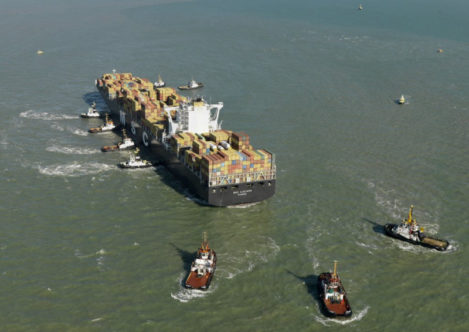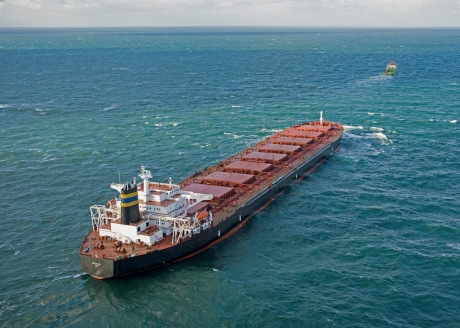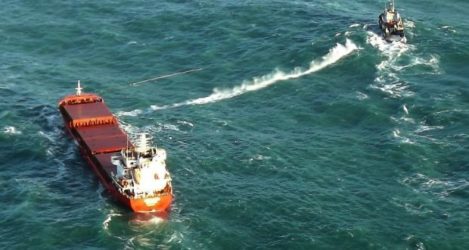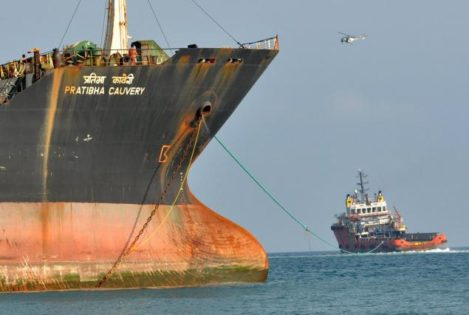Rescue towage requires an element of caution
This article examines the extent to which commercial towage rates have been taken into account by arbitrators in the assessment of salvage awards. It raises some points of concern which operators should be aware of.
Rescue towage requires an element of caution
Tug owners should make sure they have the information they need to protect themselves from potentially harmful situations before agreeing to tow a vessel in difficulty on commercial terms.
Ships at sea can and do have engine failures. When that happens, a tow to a port of refuge to effect repairs is generally needed. Such failures can occur in waters where towage facilities are readily available, or in much more remote waters where, perhaps, only a professional salvor is prepared to venture.
Where there is no immediate physical risk to ship or cargo, cases are usually described as “rescue towage”. In the past, professional salvors would offer their services on the basis of Lloyd’s Standard Form of Salvage Agreement, known as Lloyd’s Open Form (LOF). However, this led to tensions between the application of the law of salvage and commercial reality. Times have changed, and nowadays rescue towage is almost invariably performed on a contract or commercial basis.
How has this happened and how can the availability of towage on commercial terms impact on the assessment of rescue tow awards in cases where LOF might be signed?
There are certainly some factors that a tug operator should bear in mind when undertaking a rescue tow on commercial and not salvage terms.
(a) The starting point
The starting point in assessing an award of salvage is that a court or arbitrator is required to apply the criteria set out in Article 13 of the International Convention on Salvage (London 1989). This convention has been adopted by most of the major maritime jurisdictions and therefore, in theory at least, should result in a uniformity of approach internationally. It is applied, as a matter of English law, to LOF cases heard in arbitration in London.
The consideration of alternative assistance – that is to say, the availability of other units to undertake the same job – is one such criterion. The availability of other tugs on commercial terms impacts on the actual danger to the casualty and will depress an award. As a matter of public policy, a fair balance has to be struck between encouraging professional salvors with generous awards and not discouraging owners and their underwriters from accepting services on salvage terms. This is not a very easy end result to achieve.

When the MSC Luciana was grounded on a sandbank near Zeebrugge in 2011, tugs from Multraship and URS came to the rescue.
(b) The disparity principle
In the past shipowners and their underwriters have tended to perceive the reward that salvors get for such a towage by way of arbitration under LOF as being far too much. Underwriters have consequently sought to discourage the use of LOF for rescue towage. In an effort to temper the impact of such awards, there emerged in Lloyd’s salvage arbitrations what is known as the disparity principle.
This principle was applied in cases where there was no physical danger to the disabled vessel, where a shipowner had time to search the market and where alternative assistance was available on commercial terms. It was said that in such cases a LOF award “should not be wholly out of line with commercial rates.”
The validity of the disparity principle was tested in 2008 in the case of Voutakos, a large, laden bulk carrier that became disabled in the Western Approaches and was towed to Rotterdam by a large tug, sub-contracted under LOF by professional salvors. The Lloyd’s appeal arbitrator held that the so-called principle was “seriously flawed” and should be discarded, principally because, as formulated, its application suggested that the commercial rate was something that should be built on to arrive at an award. Such a cost-plus exercise had always been held to be wrong in law.
The case was taken on appeal by the shipowners to the High Court in London. The Admiralty judge agreed with the appeal arbitrator that the principle was misconceived, although he did so for different reasons.
In essence, he held that the so-called disparity principle was unworkable. Firstly, the levels of danger affecting immobilised vessels are in each case different. Secondly, there was the problem of identifying the proper status of the salvors to be adopted for the purposes of the claim, as a professional salvor with a large and long-term investment in the industry will attract a higher award. Furthermore there were uncertainties as to the terms on which such services might be performed by others.

Voutakos under tow by Fairmount Marine tug. The case marked a change in the legal approach to rescue tows.
(c) The proportionality principle
Now that the disparity principle has been abandoned, what is the overall relevance of commercial towage rates in a salvage? The Court gave guidance on this issue, but it must be borne in mind that such relevance is in fact sensitive to a number of different factors. First, the commercial rate provides a check on the salvor’s potential remuneration, but this is not a cost-plus consideration. Rather, it reflects the principle that an award should not be out of all proportion to that which was done, and so not out of all proportion to commercial rates.
Secondly, it is useful as a check to ensure that an award is sufficiently encouraging, given current market rates. It follows that the level of awards is not written in stone. If relevant commercial rates reduce, then so too should awards in appropriate cases. Thirdly, commercial rates operate as a reflection of the principle of proportionality, which will usually occur in the case of a sub-contracted towage where the whole, or a large measure of the commercial cost is reflected in the salvor’s out-of-pocket expenses. This will have a moderating influence. Finally, as already stated, commercial rates are relevant to the issue of alternative assistance.
The abolition of the disparity principle was not greeted by the market place with any enthusiasm. It was, in effect, replaced by a proportionality principle which, of itself, is not easy to apply either. Is this a question of applying a multiple, or “uplift” on the cost or relevant commercial rate? As English law stands that would be a wrong approach, since it conflicts with the condemnation of any cost-plus approach to the assessment of a salvage award.
The impact of the Voutakos case on the level of awards is hard to assess. In those towage cases which have come to arbitration, evidence of commercial rates has been put forward. This is not without problems because an assessment needs to be made of the quality of such evidence. It has to be relevant and meaningful.
It is not helpful to provide a quotation for a tow which makes certain assumptions, and this is particularly the case of towage from a remote location, where commercial tugs are scarce. To say “if there were a tug available, the cost of towage to a port of refuge would be US$x per day” is not helpful if, in fact, there is no tug available and one would have to mobilise over a considerable distance and de-mobilise afterwards.
(d) Increase in the use of TOWCON/TOWHIRE as an alternative to LOF
In recent years there has been a very significant tailing off of rescue towage cases on the basis of LOF. The Lloyd’s Salvage Arbitration Branch report for 2014 showed a drop in LOF contracts where an engine breakdown had occurred of some 8 per cent in that year. This is understandable. With the required application of the Article 13 criteria to an award of salvage, assuming the salved fund is sufficient, the salvor’s remuneration is always going to be significantly more than the cost of towage on commercial terms. Meanwhile there are today fewer casualties and many companies competing for what jobs are on offer. It is inevitable that an offer of a commercial tow will in most cases be more financially attractive than LOF.
Thus shipowners and underwriters have little incentive to use LOF in rescue towage cases, looking instead to a commercial contract, usually on Towcon or Towhire terms. This is hardly surprising since those are the terms upon which a professional salvor would sub-contract a tug to perform the towage service anyway. Why pay a professional salvor more than he himself is paying for the unit actually performing the tow, unless some other significant added value in terms of salvage expertise is also needed?
There are still cases, however, where owners will look to agree LOF. One of the reasons for this may be because the ship’s value is low and the cargo value is high. Awards are paid in proportion to value and there is no money paid up front. Consequently the burden of the salvage award is thrust on the cargo owners and any eventual liability has to be sorted out elsewhere, under either a charter party or a bill of lading contract.
Professional salvors have reacted to this demand from the market and are much more inclined to offer a commercial rate for rescue towages, even in remote locations. Non-professional towage companies also have the opportunity to participate in this market and receive a good rate for their work.

It is vital to ascertain whether tug and tow will be allowed to enter a port of refuge, before entering a contract
Considerations when entering into a towage contract
However, there are certain cautions that need to be highlighted. Before entering into any towage contract regarding a disabled vessel, it is vital that the tug owner obtains accurate information about the position and condition of the ship. Experience has shown that, unless this is done, the tug on arrival often finds a much worse situation than initially thought.
For example, there may be ingress of water into the engineroom which has to be pumped out. Unless the tug carries portable pumps this cannot be dealt with and, in any event, this is a service outside the ordinary towage contract. This can lead to arguments about whether the original agreement should now be upgraded to a salvage contract or how the original towage agreement is to be amended.
It is also important to ensure that the tug and tow will be allowed to enter a suitable port of refuge. A disabled casualty in poor condition is often less than welcome. As a result, unless entry is approved in advance, the tug owner might well find the contract is becoming extremely onerous in terms of time spent, and it may prevent him performing other contractual commitments.
Many ports will not allow a disabled vessel in, unless the tug remains standing by while repairs are effected. This can be a lengthy process and potentially a disaster if the shipowner decides to walk away from the casualty. Professional salvors are prepared to take that risk and are experienced at negotiating entry, even providing a guarantee in appropriate cases if one is not forthcoming from the insurer. For the ordinary commercial operator, however, this might present a potential nightmare that would be best avoided.
Article written by John Reeder QC and Stephen Askins. Reproduced with kind permission of Tug Technology & Business magazine. View original article.
John Reeder QC is a consultant at www.tugadvise.com, the specialist arm of Tatham & Co. He is an active barrister specialising in collisions, salvage and shipping litigation.
Stephen Askins is a member of the www.tugadvise.com team and a partner of Tatham & Co. He has over 25 years experience in shipping handling wet and dry cases and is particularly known for his expertise in piracy matters.

